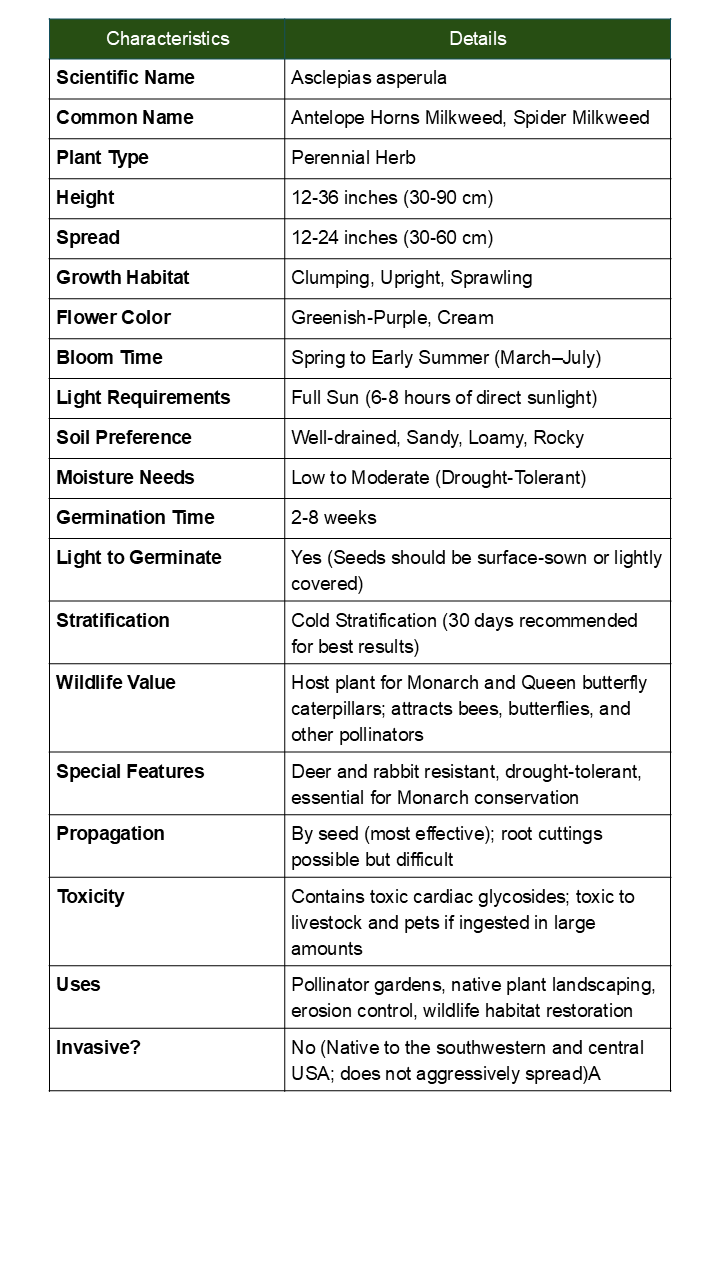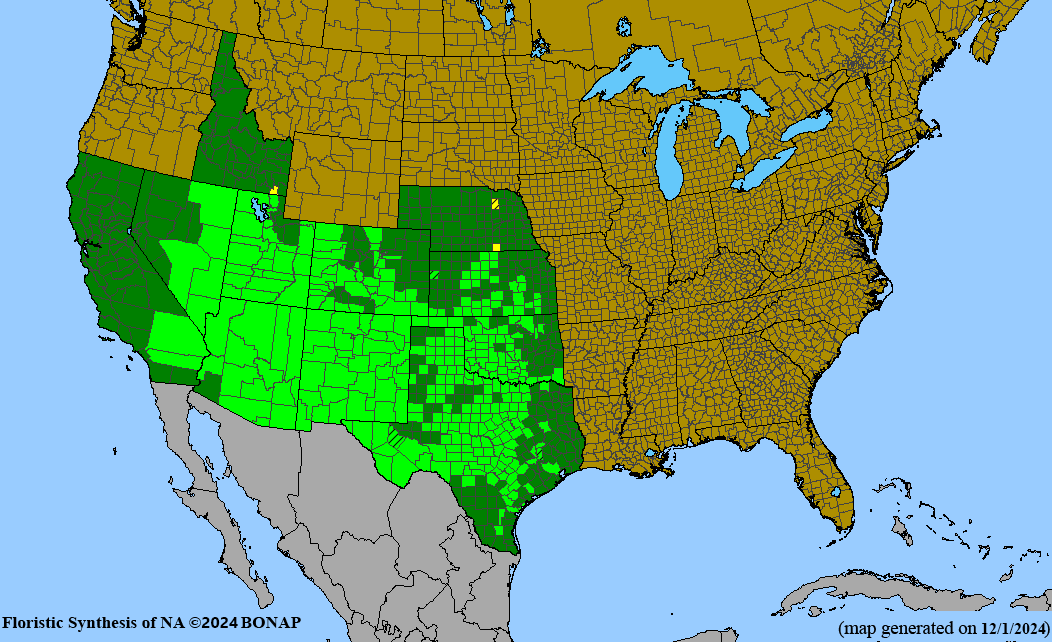Antelope Horns Seeds - Native Milkweed (Asclepias asperula)
Antelope Horns - A Unique Native Milkweed
Asclepias asperula, commonly known as Antelope Horns or Spider Milkweed, is a distinctive native perennial milkweed species found throughout the southwestern United States. This remarkable plant gets its common name from the unique curved seed pods that resemble antelope horns, making it both an ecological treasure and a conversation piece in native gardens.
Key Features:
- Native Heritage: Indigenous southwestern U.S. milkweed species
- Unique Seed Pods: Distinctive curved pods resembling antelope horns
- Monarch Support: Essential host plant for monarch butterfly caterpillars
- Pollinator Haven: Attracts butterflies, bees, and beneficial insects
- Drought Tolerant: Extremely hardy and adapted to arid conditions
- Low Growing: Compact growth habit perfect for xeriscapes
Growing Information:
Antelope Horns thrives in full sun and well-drained, sandy soils. This low-growing milkweed typically reaches 1-2 feet in height and produces clusters of greenish-white flowers followed by the characteristic curved seed pods. As a member of the milkweed family, it plays a crucial role in supporting monarch butterflies and other pollinators.
Perfect for: Native plant gardens, xeriscapes, monarch butterfly gardens, pollinator habitats, and drought-tolerant landscapes.
FREE SHIPPING WITHIN USA



